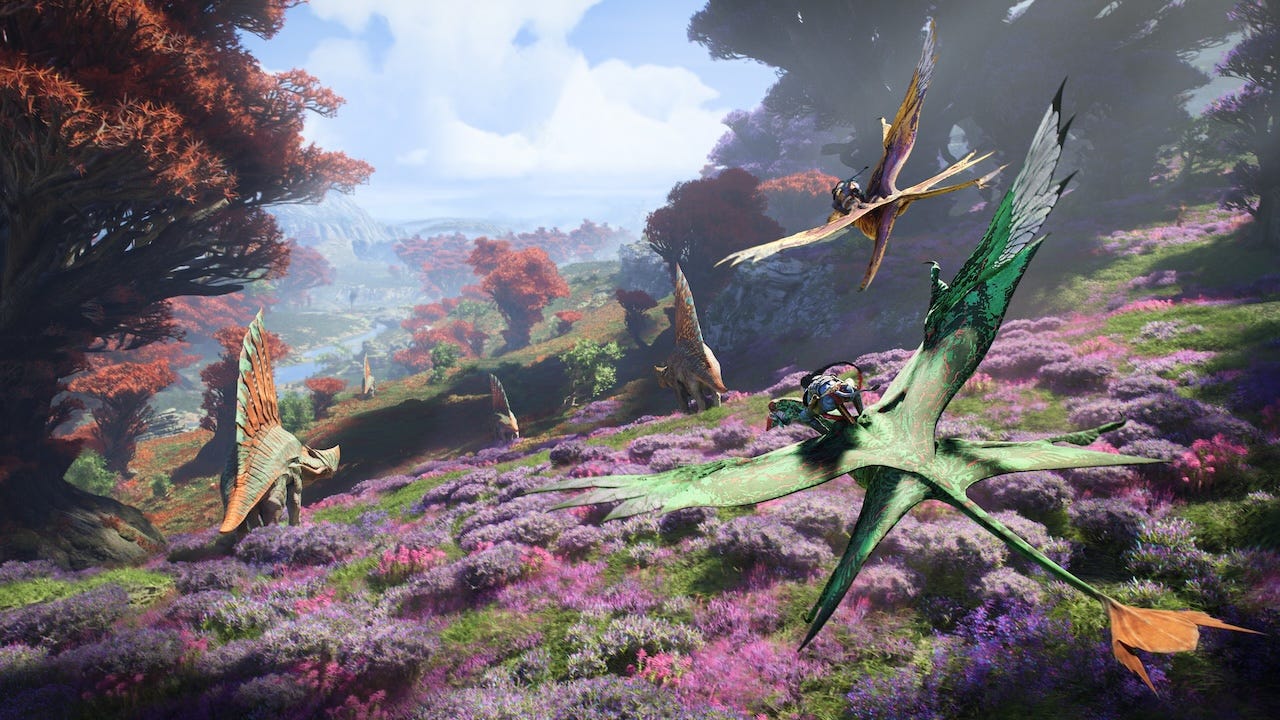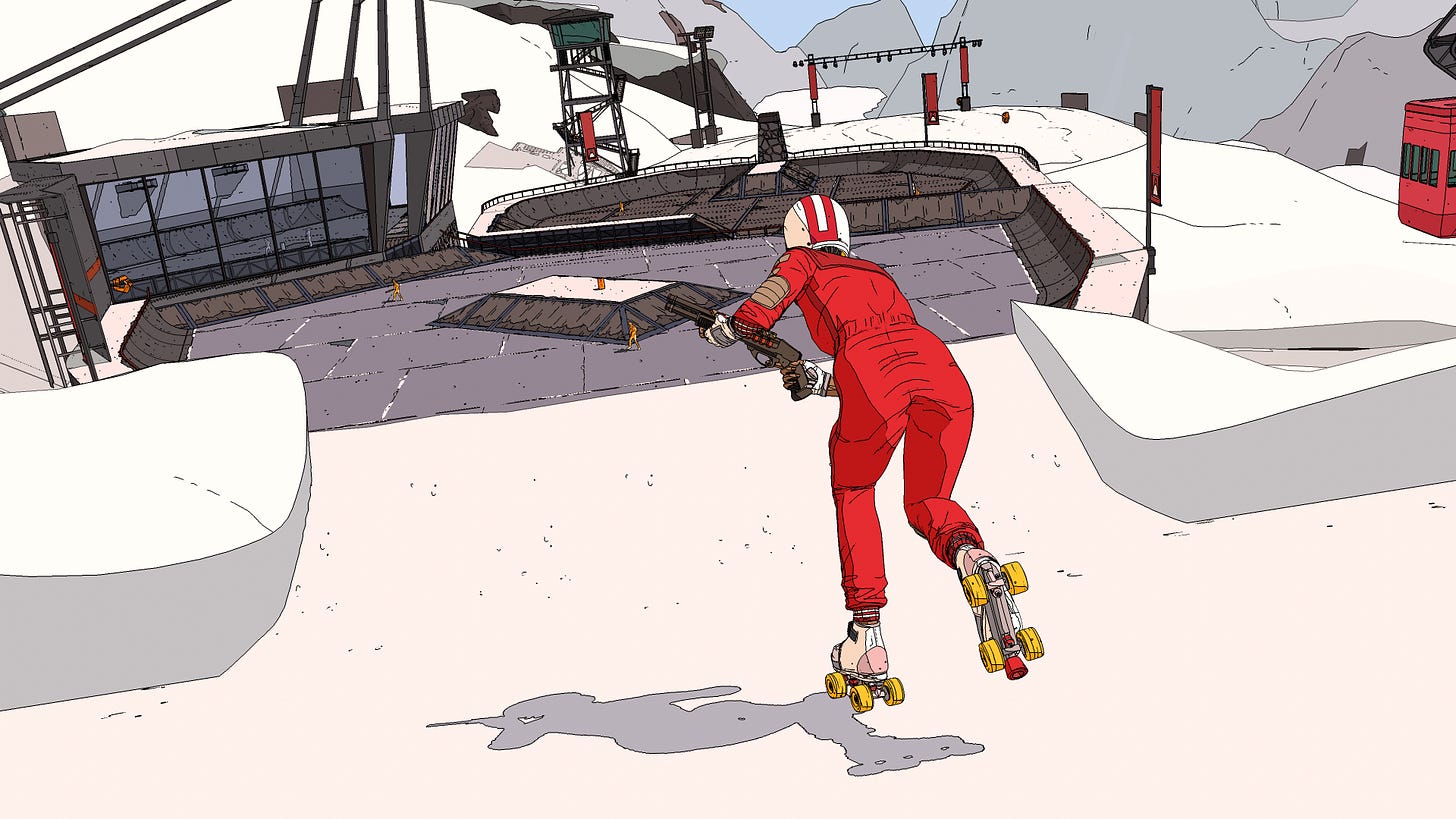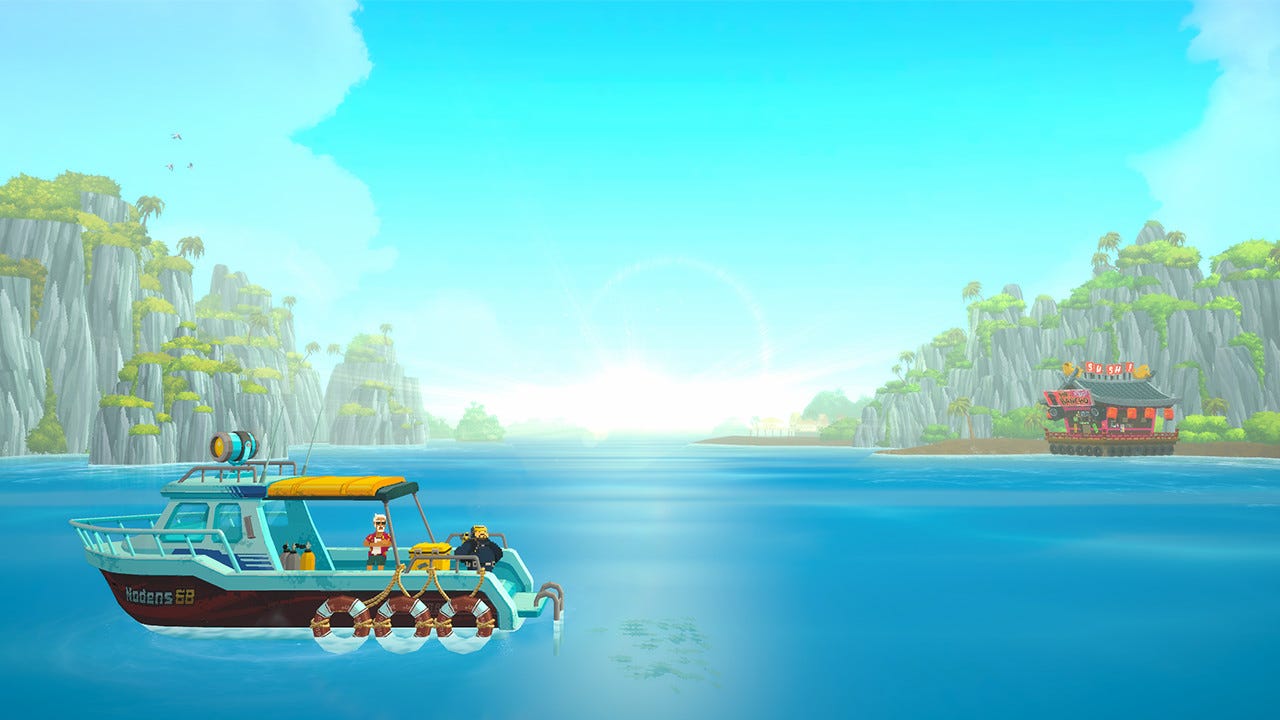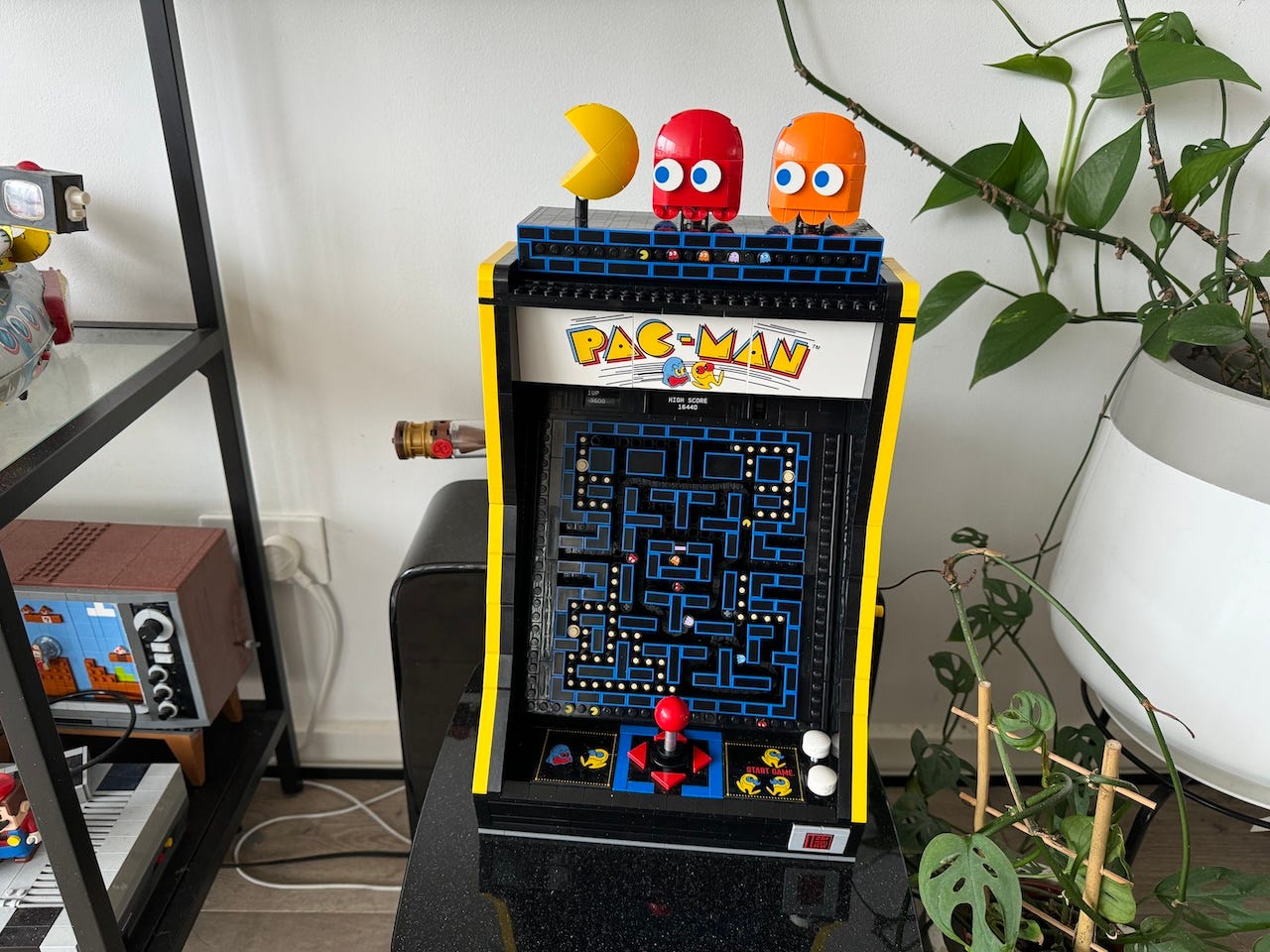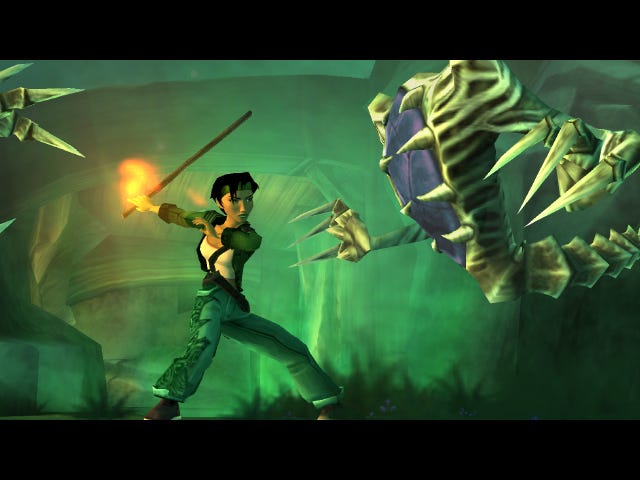How useful is 'indie' as a category?
Plus Frontiers of Pandora, Pac-Man Lego, and Ocarina turns 25
Hello there! This week we’re talking about the new Avatar game, why people are mad about the “best indie” nominations at The Game Awards, Lego Pac-Man and what games are now officially old, as the game release calendar enters that brief window of time where AAA multiple games are not slapping us in the face every single week.
2023 isn’t done with us yet however, especially if like me you endulge in the constant deluge of stuff hitting Steam. In the last few weeks I’ve played the incredible city builder / resources miner SteamWorld Build, the heartfelt and very long timeploop RPG In Stars and Time, the difficult and delightful precision platformer Bzzzt the styish turn-based action thing Wordless. It literally doesn’t stop, traditional pre-Christmas quiet period be damned.
Living on the frontier
By Alice
Eagle-eyed readers might have noticed that two weeks ago, I mentioned that I was at the Lightstorm Entertainment Museum in LA. Well, the reason why I was there was because Ubisoft flew me over so I could learn more about Avatar: Frontiers of Pandora from the people who made it, and also spend some time with the game.
I will admit that the Avatar movies didn’t fully grab me – I felt like they needed a stronger editor and that the scripts could have been punched up a bit. But you can’t deny how beautiful they are. A lot of this comes down to the fact that every costume and prop, even if it was just going to be CGIed for the movie, was made by hand to be fully functional (or as fully functional as a sci-fi prop can be). It’s a breath of fresh air at a time when Marvel movies are CGIing costumes and props just so Disney can avoid employing unionised workers.
This attention to detail spread nicely to the game, though the props were not constructed IRL for the game.
Jumping in, I was really taken by how beautiful the world of Pandora looks in Frontiers of Pandora. It’s a world I was keen to explore when watching the movies, and I was pleased to have the opportunity to do so in game. I am, however, a bit iffy on the first-person camera choice. I wish the developers had gone with third person, just for motion sickness reasons (it’s a bouncy camera, though hopefully there will be accessibility options in the finished product). I was also surprised by how slow flying felt, though I appreciated that flying was in third-person.
The game really feels like a more lush version of Horizon Forbidden West, and I’m going to be interested to see how many Avatar fans buy their first console to play Frontiers of Pandora, and then jump to games like Horizon.
What to play
Free this week on the Epic Store is Deliver Us Mars. It’s an “atmospheric sci-fi adventure” about recovering stolen Ark colony ships from the mysterious “Outward”. I (Alice) have never played this game, and it doesn’t really look like my jam, but it does look like the jam of a lot of people. If it’s your thing, go forth and claim it for free now.
Joining Xbox Game Pass this week are the console version of strategy game Dune: Spice Wars, the revamped Killer Instinct Anniversary Edition, and Rollerdrome. Rollerdrome is a must-have for people who want to play a shooter on skates, and I (Alice) think that’s everyone.
New to Apple Arcade is Delicious - Miracle of Life+, which is exactly what it sounds like; a cooking sim where you play as a pregnant mother-to-be and have to get all your busy life stuff done and deal with your husband in between running your cafe and food vlog, with a wide-eyed-characters-staring-directly-at-you presentation that looks for all the world like it’s going to have lessons from The Bible in there somewhere. I (Tim) haven’t played it by the way, the trailer gave me the shivers.
Sony has extended its Black Friday sale to simply become an end of year sale, and as usual it’s mostly slight reductions on expensive deluxe editions of newer games, or steeper discounts on games you probably already have. Worth a look though, and I (Tim) will specifically call out Diablo II for $23, Final Fantasy XV Royal for $19, Resident Evil 2 for $14, and Hot Wheels Unleashed for $10.
Indistinct, indescribable indies
By Tim
With The Game Awards recently announcing its nominees for each category, a familiar minor squabble has once again broken out online, around what the word “indie” really means.
The inciting incident here is the nomination of Dave the Diver. It’s a cozy, quirky, pixel graphics adventure that was self-published by its developers, which all points to it being indie. But the developer is owned by Korean gaming giant Nexon, which has thousands of employees and makes billions every year.
Indie obviously implies independence, and not being beholden to others. In other creative industries, it’s typically meant something like “created or funded outside the popular mainstream studio system or funding mechanisms”. But if the term ever truly had concrete meaning, it’s been confused considerably as the traditional studio systems have been disrupted by digital distribution and removal of many artistic barriers.
In games, indie initially became a shorthand for “not AAA”, used pejoratively by those who preferred cutting edge graphics or big budget productions, as well as fondly by those who wanted a fresher or more auteur approach. Elements like pixel graphics and other artistic choices became associated with indie games, in part because of the budgetary and development differences between small independent teams and big studios.
But these days, the aesthetic indicators of “indie”ness and otherwise are now entirely separate and distinct from whether creators are funded by big business. Plenty of indies have the resources to make shiny big 3D games if they want to, and plenty of major studios are interested in smaller-scale, retro-inspired or more artistically interesting games.
Baldur’s Gate 3 was developed and published by Larian, a company with no parent. But presumably they were still beholden to Wizards of the Coast in some respect, the owners of the Dungeons and Dragon’s IP. On the other hand last year’s Pentiment was published by Microsoft, but by all reports it was made by a very small team with almost no corporate oversight.
Which is all to say that lumping the weird games together regardless of how they were created, as The Game Awards has done, may be problematic. But it’s not necessarily less so to group them according to studio ownership or funding method.
The question we need to ask is what utility we expect from maintaining “indie” as a specific subset of games. Are we trying to communicate to players that they were made with less funding? That they’re the vision of a small group of people? Or are we trying to demarcate them as niche interest projects? Games for discerning gamers? I would argue that, no matter what answer you give, the definition of the word will be necessarily fuzzy and indistinct.
Bricks, Boards and Beginnings
by Alice
I recently, finally, finished the Lego Pac-Man Arcade Machine. It was only 2651 pieces, meaning that it’s terrible value for $399.99 (unless you find it at a good discount), and I did slightly hate the Technic section in the middle because I am bad at Technic.
But I am really loving how there is clearly a bunch of retro-game loving nerds at Lego who are putting their whole soul into going above and beyond with these retro gaming sets. The Lego Mario NES was a love letter to Super Mario Bros, which remains one of my favourite games of all time, and now my favourite Lego build ever.
Then there was the Atari set, which I don’t have, but by all accounts was utterly delightful and similarly detailed.
And the Pac-Man set just continues that. The Technic portion in the middle that I hated building (not because it was bad, but because I was bad at it) but loved playing with afterwards is the mechanism that means you can turn a crank to have Pac-Man move around and have the ghosts chase him. It’s genius. And makes a great display piece.
The other part that I really loved was the detail on the top of the arcade machine. BrickHeadz-style figures of two of the ghosts chasing Pac-Man, and then you can press in an axel to have the scene turn and have Pac-Man chase the two blue ghosts.
It’s simple, but it makes a big difference.
Then there’s the little secret hidden in the back of the machine, of a miniature scene of a woman playing in an arcade.
It’s all these details that really exude affection and care. It’s rare to see nostalgia traps for adults that have this level of attention to detail. Lego could have got away with making it cheaply, quickly, and without moving parts. But clearly there is a designer who wanted to show the details.
I still don’t think it’s quite worth $400, but I do love to see good things made by passionate people.
Retro Esoterica
by Tim
As November comes to a close, it’s time to look back on some games that celebrated major anniversaries this month.
Now 20: Beyond Good and Evil You may think it conceited to name a video game about a pig-man and a photojournalist fighting aliens after Nietzsche’s immense work on perspectivism, but in this case (assuming the name is a reference and not just a very strange coincidence) it’s easy to overlook, because the game itself is so incredible. The mid-2000s were jammed with third-person character action games, but the blend of the unique world, weird terrorism plot and Ubisoft-style Zelda-adjacent gameplay really work for this one, even if it couldn’t possibly live up to the name.
Now 25: Ocarina of Time Within the Zelda franchise’s overarching narrative (such as it is), Ocarina is an important central node after which the timeline branches in multiple directions. But it serves a similar role in real life history; clearly splitting Zelda (and action games in general) into those that came before and those that came after. In some ways the game is just adapting Link to the Past into 3D, but in doing so it’s also revolutionising the form entirely. From combat to dungeons, and from cut-scenes to incidental secrets and puzzles, Ocarina achieves an incredible level of excellence considering how early it is in Nintendo’s 3D efforts, and it remains a wonderful experience as well as an important milestone.
Now 30: Disney’s Aladdin Two very different Aladdin games were released in the same month, both with the same name, and both with their own strengths. Sega and Virgin created a version for the Mega Drive, directed by Shiny Entertainment (Earthworm Jim) founder David Perry, with animation assistance from Disney itself. It looks amazing, though I find the sword combat a weird fit for the character, and in general the tough trial-and-error gameplay hasn’t aged so well. For the Super Nintendo, Capcom published its own version directed by Resident Evil creator Shinji Mikami. This one’s more of a pure platformer, and I think captures the magic of the film better despite not looking or sounding as authentic.





